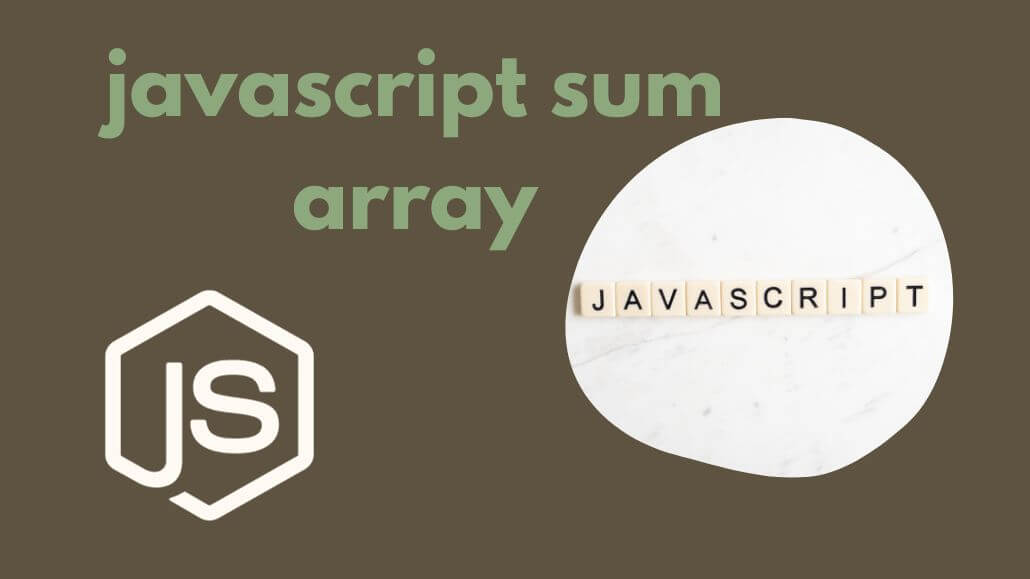Introduction to javascript sum array
JavaScript has long been considered the go-to programming language for creating interactive and dynamic websites, so its use in summarizing arrays should be no surprise.
Here, we explore various strategies for efficiently summarizing arrays in JavaScript while optimizing code performance – let’s jump right in!

The Basics of javascript sum array
Before we explore more advanced techniques, we must grasp the fundamentals of array summation in JavaScript.
Arrays are versatile data structures that enable you to store multiple values within one variable; summarizing its elements requires iterative processes for maximum efficiency.
The code
const numbers = [1, 2, 3, 4, 5];
let sum = 0;
for (let i = 0; i < numbers.length; i++) {
sum += numbers[i];
}
console.log(`The sum of the array is: ${sum}`);
In the above code snippet, we initialize an array called numbers and then use a for loop to iterate through its elements, accumulating their values in the sum variable.
While this approach works, JavaScript offers more elegant and efficient methods for array summation.
Utilizing array.reduce() for javascript sum array
JavaScript provides a built-in method called reduce() that simplifies array summation significantly.
The reduce() method executes a provided function for each value of the array, resulting in a single output value. Here’s how you can use it to sum an array:
The code
const numbers = [1, 2, 3, 4, 5];
const sum = numbers.reduce((accumulator, currentValue) => accumulator + currentValue, 0);
console.log(`The sum of the array is: ${sum}`);
In this code snippet, reduce() takes a callback function as its first argument, which adds the accumulator (initialized to 0) to the currentValue of each array element. The result is the sum of all elements in the array.
The JavaScript Spread Operator
Another elegant way to sum an array in JavaScript is by using the spread operator (…). This operator allows you to expand an array into individual elements, making it easy to pass them as arguments to various functions, including Math.sum() for summation.
The code
const numbers = [1, 2, 3, 4, 5];
const sum = Math.sum(…numbers);
console.log(`The sum of the array is: ${sum}`);
Here, we spread the numbers array into individual elements and then pass them to Math.sum(), which efficiently calculates the sum.
Efficiency Matters: Big O Notation
Efficiency in coding is crucial, especially when dealing with large arrays. Understanding the efficiency of different summation methods is essential for optimizing your code. Let’s briefly discuss the efficiency of the methods we’ve covered:
- Iterative for loop: O(n) – Linear time complexity.
- reduce(): O(n) – Also linear time complexity.
- Spread operator with Math.sum(): O(n) – Linear time complexity.
All these methods feature linear time complexity, meaning their execution time scales directly with array size. While any differences in efficiency might not be noticeable for smaller datasets, selecting an efficient method for larger ones could significantly impact performance.
Choosing the Right Method
When deciding which method to use for array summation, consider the specific requirements of your project. If simplicity and readability are your priorities, reduce() and the spread operator are excellent choices.
However, if you need to optimize for performance, benchmarking different methods with your data can help you make an informed decision.
Conclusion

Javascript sum array is a fundamental operation that every web developer should master. This article explored various methods, from the basic for loop to more advanced techniques like reduce() and the spread operator. Each method has its strengths and use cases, allowing you to choose the one that best suits your project’s requirements.
Efficiency matters, especially when dealing with large datasets, so understanding the Big O notation for different methods is essential. By optimizing your code for array summation, you can ensure your JavaScript applications run smoothly and efficiently.
Remember, the key to becoming a proficient JavaScript developer is practice. So, experiment with these methods, explore their nuances, and incorporate them into your coding repertoire. With time and experience, you’ll become a master of JavaScript array summation.
Now, armed with this knowledge, go forth and conquer your JavaScript coding challenges with confidence. Happy coding!
